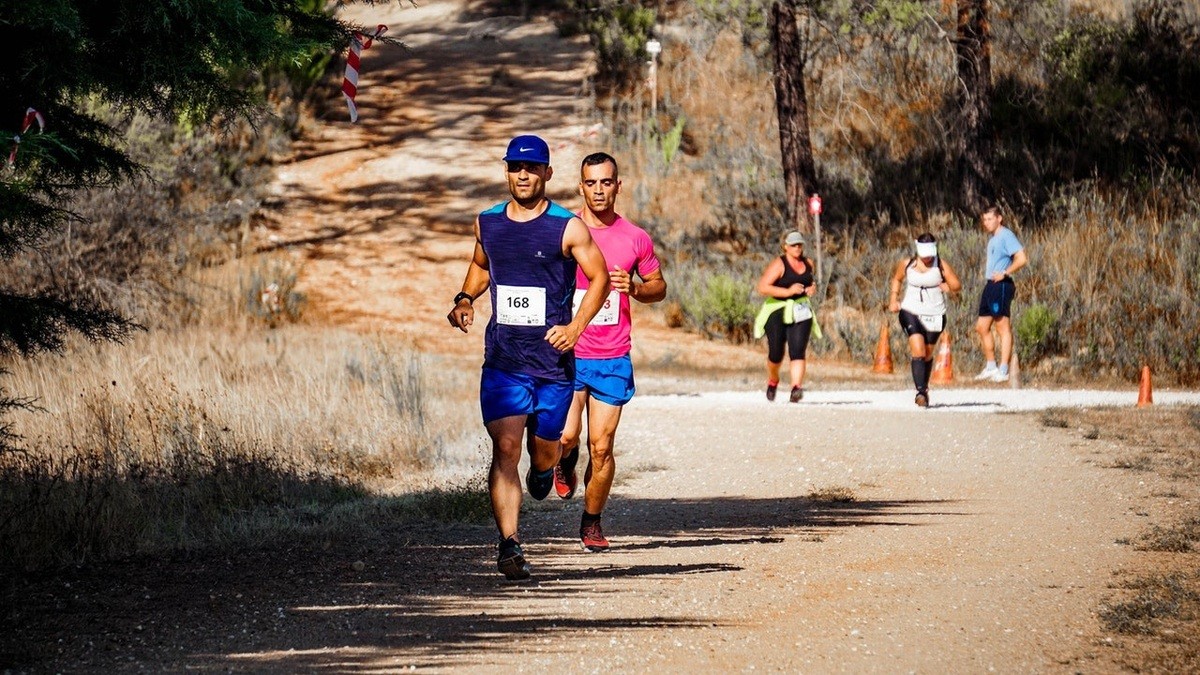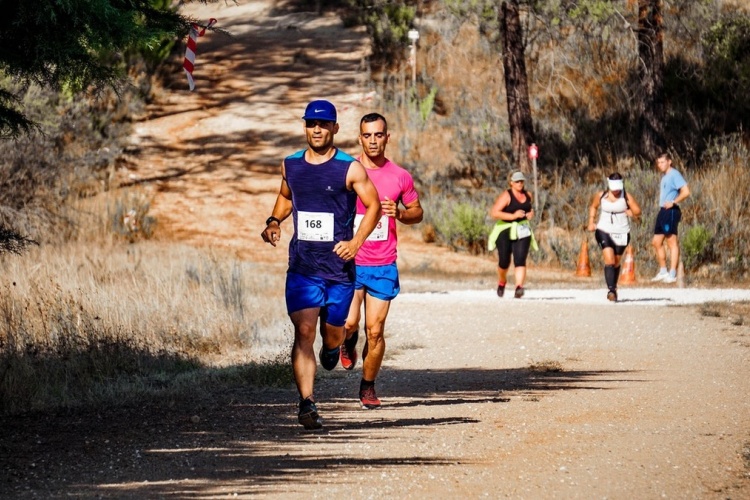Cross Country Running: Risks & Injury Prevention (Dr. Rob S. Williams' Guide)
Cross country running is a way for humans to connect with nature, but like all sports, it carries risks of injury—so proper prevention is essential. Dr. Rob S. Williams (MD) has summarized the potential risks and injuries of cross country running, along with prevention tips, to help enthusiasts stay safe.

What is Cross Country Running? (什么是越野跑?)
Cross country is an outdoor endurance sport that combines mental challenge and fun, requiring both physical and psychological engagement. It’s not just about putting one foot in front of the other—you also need to anticipate obstacles and changes on the trail or course. 越野是一项户外耐力运动,能给参与者带来精神挑战和乐趣,需要身心同时投入。参与者不仅仅是简单地迈步向前,还要预想前方路上或赛道上可能出现的障碍与变化。
For example: How to clear a stone without tripping? Can you safely pass the runner ahead without slipping in a mud puddle? How to handle hills or turns—with a short burst of speed, or at your steady pace? 例如:如何越过石头而避免绊倒?能否安全超越前面的跑者而不跌入泥坑?应该怎样应对山路和转弯——是短时间加速,还是以现有速度稳步前进?
Cross country races usually take place in all weather conditions, so you must account for environmental factors that affect performance: rain, wind, snow, ice, hail, and heatwaves. Races are rarely canceled due to bad weather. 越野赛通常在任何天气状况下都会进行,这意味着参与者还需考虑影响比赛成绩的环境因素:风雨、冰雪、冰雹和热浪。鲜有越野赛因天气恶劣而取消。
Many runners love cross country and its sister sport (trail running) because it differs from road running. Terrain variations and the mental challenge of adjusting pace to a changing course make it more stimulating. 很多跑者热爱越野跑及其姊妹运动——野外跑,正是因为它与公路跑不同。野外的地势变化,以及调整节奏适应多变赛道的精神挑战,让越野跑更具刺激性。
Risks of Cross Country Running (越野跑的风险)
Cross country routes cover mixed terrain: natural areas, groomed paths, and paved sections. You may run on pavement, packed/loose dirt, sand, gravel, mud, leaves, pine needles, tree roots, rocks, grass, moss, and even encounter wildlife (like snakes). 越野跑途中会经过多种地形:自然地带、清理后的路径和铺装路面。你可能踩在沥青、压实/松软土地、沙子、碎石、淤泥、落叶、松针、树根、岩石、草地、苔藓上,甚至遇到野生动物(如蛇)。
Though most race courses are groomed and approved beforehand, surprises still happen: weather, wildlife, and falling foliage are uncontrollable. For non-race training (e.g., wooded paths or parks), trail maintenance isn’t guaranteed—you may find unexpected obstacles like trash or discarded bottles. 尽管大多数赛道赛前会清扫核准,但仍有意外:天气、野生动物和落叶无法控制。非比赛训练(如林间小路、公园)的赛道维护无保障,可能遇到垃圾、废弃瓶子等意外障碍。
All running risks impact or repetitive motion injuries, but irregular/slippery surfaces increase acute injury risks by altering your gait. You may overstretch to avoid obstacles, swerve suddenly (straining tendons, twisting ankles/knees), or trip—leading to abrasions or even head injuries. 所有跑步都有撞击伤或反复动作损伤风险,但不规则/湿滑路面会改变步态,增加急性损伤风险:为避障过度拉伸、急转弯(牵拉肌腱、扭伤踝膝)、绊倒(造成擦伤甚至头部损伤)。
Typical courses also have twists, turns, and short steep hills. These rapid changes put extra stress on feet, hips, and legs (unlike level roads)—for example, downhill running may jam or sprain toes. Heat illness (dehydration, sunburn, heat stroke) is another concern, especially in sunny, humid areas (e.g., Texas). 赛道常含曲折和短陡坡,这种快速变化给脚、髋、腿带来额外压力(平路无此问题)——如下坡可能挤伤或扭伤脚趾。中暑(脱水、晒伤、热射病)也是隐患,尤其在晴朗潮湿地区(如得克萨斯州)。
The Most Common Cross Country Injuries (最常见的越野跑损伤)
Below are common injuries for cross country runners of all ages (middle school, high school, adults). Note: These injuries are more common in girls/women due to the "female athlete triad" (calorie depletion, bone loss, hormonal/menstrual changes) and larger hip-ankle angles—making them more prone to knee injuries (meniscus/ACL tears) and stress fractures. 以下是全年龄段跑者(初中、高中、成人)的常见损伤。注:女孩/女性因“运动员三症候群”(热量不足、骨流失、激素/月经变化)和更大髋踝角度,更易出现膝关节损伤(半月板/前十字韧带撕裂)和应力性骨折。
- Stress fractures (应力性骨折)
- Shin splints (medial tibial stress syndrome, MTSS) (外胫夹/胫骨内侧压力症候群)
- Achilles tendonitis (跟腱炎)
- Plantar fasciitis (足底筋膜炎)
- Runner’s knee (patellofemoral pain syndrome, PFPS) (跑步膝/髌骨疼痛综合征)
- Muscle, ligament, and tendon strains (calf, hamstring, quadriceps, gluteus) (肌肉、韧带、肌腱拉伤:小腿肚、腘绳肌、四头肌、臀肌)
- Dehydration and heat illness (脱水和中暑)
Preventing Cross Country Running Injuries (预防越野跑损伤)
Dr. Rob S. Williams recommends the following tips to keep cross country runners healthy: 罗伯·B.威廉斯博士建议通过以下方式预防越野跑损伤,保持健康:
- Stretch daily: A regular routine (both static and dynamic stretches) is key to keeping bones, joints, muscles, ligaments, and tendons healthy. (每日拉伸):规律拉伸(静态+动态)是维持骨骼、关节、肌肉、韧带、肌腱健康的关键。
- Warm up and cool down: Proper prep reduces overstretching/tearing risks for muscles and tendons. High-intensity training/races need more pre-workout warm-ups and post-workout cool-downs than low-impact activities. (热身与放松):充分准备可降低肌肉肌腱过度拉伸/撕裂风险。高强度训练/比赛比低冲击运动需要更多热身和放松。
- Wear the right shoes: Ensure a proper fit (not too tight/loose); double-knot laces to avoid tripping. Use orthotics/gel soles if recommended by an orthopedist. Break in new shoes before races and replace them every 300 miles. (穿合适的鞋):鞋合脚(不过紧/松),鞋带打双结防绊倒;遵医嘱用矫正器/凝胶鞋垫;赛前磨合新鞋,每跑300英里更换一次。
- Eat and drink enough: Avoid extreme weight loss (risky for girls/women with the "triad"). Eat a balanced diet and stay hydrated to prevent injury and heat illness—drink plenty of water before/after running, especially in sunny/humid areas. (充足饮食饮水):避免过度减重(女性“三症候群”高危);均衡饮食、充足补水防损伤和中暑,跑前跑后多补水(尤其晴朗潮湿地区)。
Relevant SEO Keywords
English Keywords: cross country running risks injury prevention、common trail running injuries stress fractures、outdoor running warm-up tips、cross country running proper shoes、female trail runner triad、trail running dehydration prevention、Hangzhou outdoor running routes




